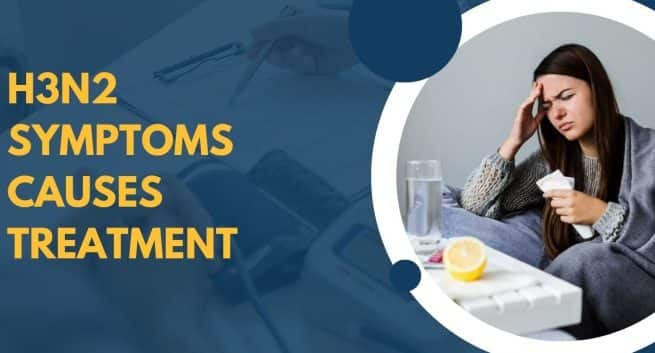
H3N2 Flu: The H3N2 flu, also known as influenza A (H3N2), is a subtype of the influenza A virus that can cause seasonal flu outbreaks. This strain of flu virus can lead to various symptoms and poses a significant public health concern. Understanding its symptoms, causes, and treatment options is essential for effective management and prevention.
1. Symptoms: The symptoms of H3N2 flu are similar to other types of influenza and can range from mild to severe. Common symptoms include fever, cough, sore throat, runny or stuffy nose, muscle aches, fatigue, and headaches. In some cases, individuals may also experience vomiting and diarrhea, especially in children.
2. Causes: H3N2 flu is caused by the influenza A virus subtype H3N2. This virus spreads through respiratory droplets when an infected person coughs, sneezes, or talks, and others inhale the virus. Additionally, touching surfaces contaminated with the virus and then touching one’s mouth, nose, or eyes can also lead to infection.
READ RELATED: Trader Joe's Shoppers Reporting a Major Issue With Popular Dairy Product
3. Treatment: Treatment for H3N2 flu focuses on managing the symptoms and supporting the body’s natural healing process. Antiviral medications, such as oseltamivir (Tamiflu) or zanamivir (Relenza), may be prescribed by a healthcare professional to help shorten the duration of the illness and reduce the severity of symptoms. Bed rest, staying hydrated, and taking over-the-counter pain relievers can also alleviate discomfort.
Prevention is crucial in controlling the spread of H3N2 flu. The most effective preventive measure is getting an annual flu vaccine, as it can provide protection against various influenza strains, including H3N2. Additionally, practicing good hand hygiene, covering coughs and sneezes, and avoiding close contact with sick individuals can help reduce the risk of infection.
It’s essential to consult a healthcare provider if you experience flu-like symptoms, particularly if you are in a high-risk group, such as young children, the elderly, pregnant women, or individuals with underlying health conditions, as they may be more susceptible to severe complications.
window.addEventListener(‘load’, (event) => {
$(‘#commentbtn’).on(“click”,function(){
(function(d, s, id) { var js, fjs = d.getElementsByTagName(s)[0]; if (d.getElementById(id)) return; js = d.createElement(s); js.id = id; js.src = “//connect.facebook.net/en_US/sdk.js#xfbml=1&version=v2.3”; fjs.parentNode.insertBefore(js, fjs);}(document, ‘script’, ‘facebook-jssdk’));
$(“.cmntbox”).toggle();
});
});







